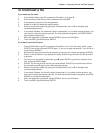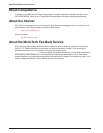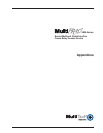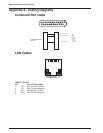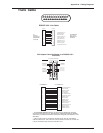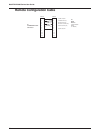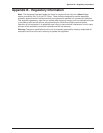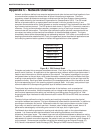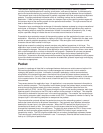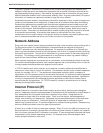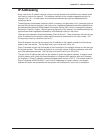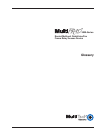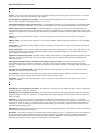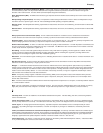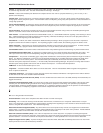
77
Appendix C - Network Overview
The transport layer provides a high level of control for moving information between systems,
including more sophisticated error handling, prioritization, and security features. It provides quality
service and accurate delivery by providing connection-oriented services between two end systems.
The transport layer controls the sequence of packets, regulates traffic flow, and recognizes duplicate
packets. It assigns packetized information which is a tracking number that is checked at the
destination. If data is missing from the packet, the transport layer at the receiving end arranges with
the transport layer of the sending system to have packets retransmitted. This layer ensures that all
data is received and in the proper order.
The session layer coordinates the exchange of information between systems by using conversational
techniques, or dialogues. Dialogues are not always required, but some applications may require a
way of knowing where to restart the transmission of data if a connection is temporarily lost, or may
require a periodic dialog to indicate the end of one data set and the start of a new one.
Presentation layer protocols are part of the operating system and the application the user runs on a
workstation. Information is formatted for display or printing in this layer. Codes within the data, such
as tabs or special graphics sequences, are interpreted. Data encryption and translation of other
character sets are also handled in this layer.
Applications access the underlying network services using defined procedures in this layer. The
application layer is used to define a range of applications that handle file transfers, terminal sessions,
and message exchanges. Data starts at the application and presentation layers, where a user works
with a network application, such as an electronic mail program. Requests for services are passed
through the presentation layer to the session layer which begins the process of packetizing the
information. A connection-oriented communication session may be opened between the two systems
to provide reliable transmissions. Once the session is established, protocol layers begin exchanging
information as appropriate.
Packet
A packet is a package of data that is exchanged between devices over a data communications link.
Data exchanged between devices may include messages and commands, control codes for
managing the session, and data. Information is placed in packets by various communications
subsystems of the transmitting system, then framed into a serial bit-stream and sent across the
communications link. One of the main reasons for packetizing and framing information is that errors
on the communication link only affect a small, discernible part of the transmission, which is easily
retransmitted.
The process starts at the application layer. An application in one computer has some information to
send to another computer. The information is sent down through the protocol stack, across the wire,
and up through the protocol stack of the other computer. This information takes the form of a
protocol data unit (PDU). As the PDU moves through the layers of the sending computer, each layer
attaches specific information to the PDU that is relevant to the protocols in that layer. This attached
information is destined for the peer layer in the receiving computer. For example, the transport layer
in the sending computer adds a sequence number to the PDU. This sequence number is read by the
transport layer in the receiving computer to resequence the packets.
The communication protocol defines the packet structure and the networking system in use and
defines the frame structure for bit-stream transmission. Each protocol layer attaches information
destined for its peer layer in the other computer. When the PDU reaches the physical layer, it is
transmitted as a stream of bits. On copper wire, the bit-streams take the form of voltage level
changes that represent binary ones and zeros. The data-link layer places the PDU in one or more
frames and uses a media access method (such as CSMA/CD or token) to gain access to the
transmission media. The PDU might be subdivided into a number of separately addressed frames.
The frame format is defined by the network in use. For example, Ethernet defines frames that can
hold up to 1,500 bytes of packet data.



